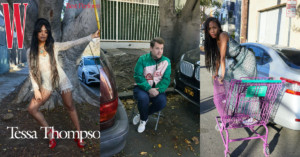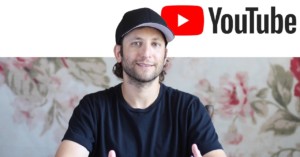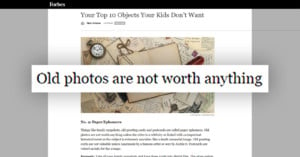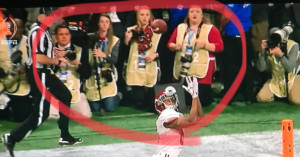
Photographer Trey Ratcliff Creates AI Bot That Will Critique Your Photos
Famous photographer Trey Ratcliff has created a photo critique GPT which recreates him giving photo feedback.

Famous photographer Trey Ratcliff has created a photo critique GPT which recreates him giving photo feedback.

I recently wrote a pair of pieces about giving and responding to critiques of photography with a certain level of decorum. As many of you already know, criticism is best given when actually asked for.

Photography, like every art form, is subjective. As such, anything we create is open to criticism, whether we like it or not. When criticism is given with the best of intentions, it can lead to growth.

I’d like to start by saying that I feel the word ‘criticism’ is interpreted by some as inherently negative, but that doesn’t have to be the case. Throughout this article, I’ve used the words ‘critique’, ‘criticism', and ‘feedback’, interchangeably, because I consider them to be more or less the same in this particular context.

Street photography can speak to our souls. Taking images of common, everyday people and transforming them into art—that’s what it’s all about.

Want to see some bad street photographs? I’ll share them and tell you why I think they’re not good. These photographs were all made during a five-day visit to New York City between October 31 and November 4, 2022.

If you pay attention to the world of photography, you may know that YouTube celebrity Logan Paul recently sold a collection of photos titled 99 Originals as NFTs for tens of thousands of dollars per photo.

In spite of my great fondness for my Fujifilm cameras, I have some constructive criticism. My biggest pet peeve with Fuji is their frustrating lack of consistency among bodies. It drives me a little nuts when switching between my Fujifilm bodies that are different models.

Remember those halcyon film days? You mailed off that little black cartridge in an envelope and then about a week later negatives and prints were magically returned. With the rise of digital, the inkjet printer promised instant gratification at low per print prices. What could possibly go wrong?

People always have a love/hate relationship with Godox. For many, they are a cheap entry point to off-camera flash, offering massive bang for the buck. Others see them as cheap imitations of more expensive brands.

South Korean designer Paeng Minwook has invented a forehead-mounted camera that is meant to criticize the modern-day smartphone user who spends an inordinate amount of time looking down at their phones and not at possible obstacles in their path.

Fashion magazine W sparked a great deal of ridicule recently over the celebrity portraits in its latest Best Performances issue -- photos criticized as being uninspired, of poor taste, technically flawed, and amateurish. That may all be true, but it was also intentional -- that's just photographer Juergen Teller's trademark style...

The New York Daily News recently published an opinion piece by a writer named Jean Son titled “When your photograph harms me: New York should look to curb unconsensual photography of women” and I would like to address it here.

The purpose of this article is to have a discussion about the current online photography community, flame wars about hardware, and some toxic behavior I see, all while trying to be as impartial as possible.

My name is Adam Marsh, and I'm a Melbourne-based event photographer. I recently wrote an article titled "Adobe, This is Why Photographers Are Hating on You,” and it seems to have been incredibly divisive. There was a huge amount of feedback and engagement on this topic in the wider global photography community.

I want to start this off by saying two things: one, this isn't a review or hands-on impressions as I have not used the computer (PetaPixel's hands-on coverage is forthcoming) and two, I am an Apple power user and have been since I was indoctrinated in high school.

Professional event photographer and photography teacher Mik Milman recently published a video that's bound to receive some mixed reactions. In it, Milman laments the dearth of experience of many photographers who pass themselves off as "experts" on YouTube, earning thousands of followers and possibly misleading beginners by offering bad advice and unqualified critiques.

Dear Entitled, I came across a screenshot of your “I have started a photography business” post in a “Classifieds” Facebook group.

What's up photography fans? It's Martin from All About Street Photography, and today I want to talk about Henri Cartier-Bresson's iconic photo of a cyclist, titled Hyères, France. I am going to take a closer look at the composition as well as at the story behind the photograph.

One of the best parts of being an active member of the online photography community is the range of criticism I have access to when I share my work. Being open to constructive criticism is an essential part of growth as an artist -- not only can it highlight shortcomings, but it can also emphasize areas in which you may be strong without realizing it.

Appropriating Indigenous cultures has been going on for a very long time. Anytime something appropriating Indigenous cultures or racist comes up, it doesn’t matter what Natives might say in protest -- most often the person doing the wrong thing claims it’s to “honor” us. Much the same way people think that Native mascots honor us. It doesn’t.

A few decades ago, Nikon was the number one manufacturer for high-end professionals. If you were a pro photographer who shot with a 35mm full-frame camera, you probably shot with a Nikon.

I don’t mean to step on any toes, but... deep breath... here we go…

Dear writer of the Forbes Magazine article, “Your Top 10 Objects Your Kids Don’t Want”...

After buying the new EOS R, Canon's first full-frame mirrorless, photographer Michael Andrew of Michael the Maven was disappointed by the camera usability. Here's an 11-minute video in which Michael points out the things in the EOS R that drove him crazy.

Looking for a place to receive constructive criticism and feedback for your photos outside of popular social media platforms and photo sharing sites? ARS BETA, a service created by street photographer Eric Kim, is designed to offer just that.

This week, TIME magazine published James Nachtwey’s photo essay on the opioid crisis. Over his decades-long career, Nachtwey has carved out a reputation as a stoic and relentless documentarian of conflict and pain. His latest effort took over a year to produce, and it has all the hallmarks of great photojournalism, providing a level of intimacy and rawness that can only be captured with persistence and skill.

Photographer Peter Lik is purportedly one of the bestselling landscape photographers on Earth, having sold a reported half a billion dollars worth of prints by 2015. He also claims to have sold a single print for $6.5 million in 2014, which would still be the world's most expensive photo today. But one of Lik's new prints is raising eyebrows and eliciting cries of "Photoshop!"

Avedon: Something Person is a downright staggering account of legendary photographer Richard Avedon's career. Weighing in at 720 (yes, 720!) pages, no detail is left out. While it's jam-packed with interesting stories from his assistants and collaborators, this book has some issues with the facts.

It was a classic NCAA Championship game. Perennial powerhouse Alabama comes back to tie the game in regulation and then win it in overtime. The game-winning play was a 2nd down, 41-yard heave-ho into the end zone that broke a lot of Georgia fan’s hearts. It was a play that will be etched in their collective memories for a long time. And one image, a screen grab of that play, will also be etched in the memories of a few people... for a totally different reason.